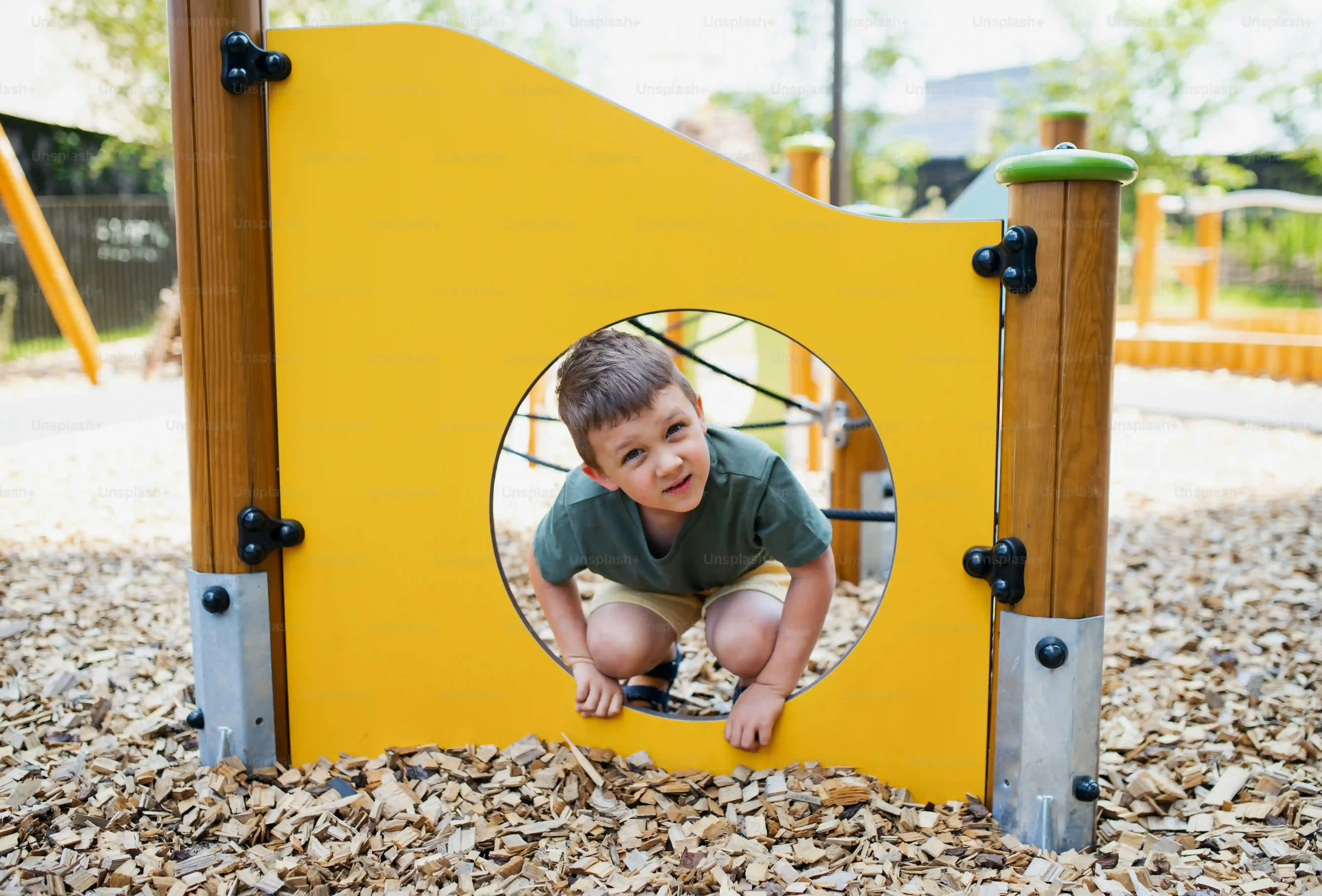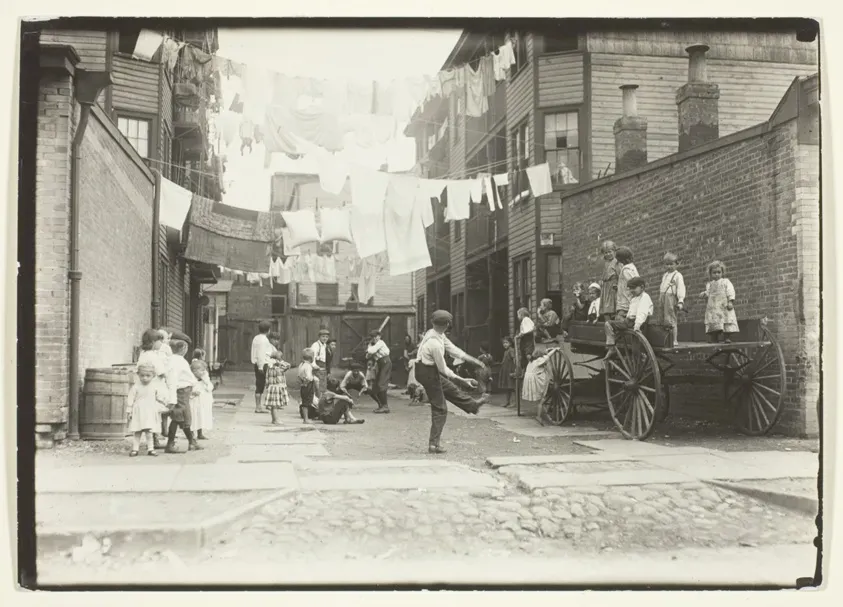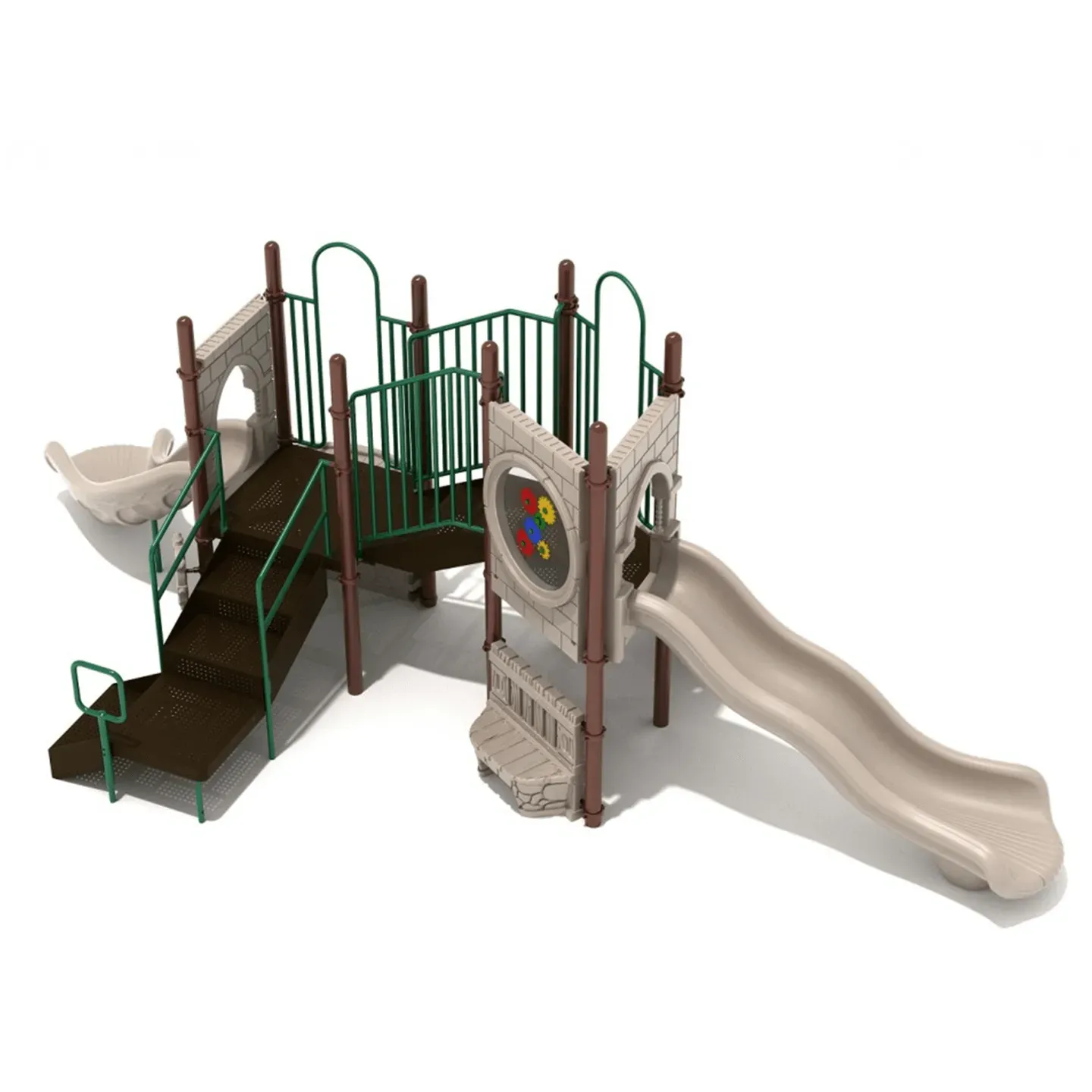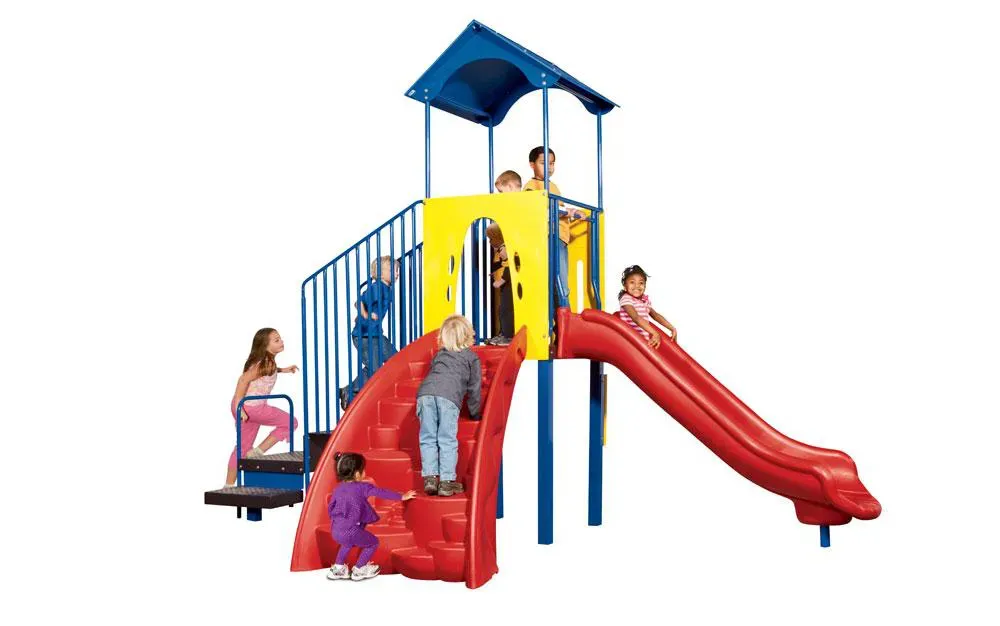Table of Contents
Let's be honest, watching little kids navigate a playground is like observing tiny, fearless explorers charting unknown territory. They're testing limits, building muscles, and figuring out social cues, all while just having a blast. But for anyone tasked with setting up these vital play spaces for preschoolers, it's not just fun and games. Choosing the right commercial preschool playground equipment is a significant undertaking, fraught with more decisions than picking out nap mats. You're not just buying swings and slides; you're investing in development, safety, and years of active play. Skip the cheap stuff, because those scraped knees and splinters aren't doing anyone any favors. This isn't just about filling a space; it’s about creating an environment where young minds and bodies can truly thrive. We'll cut through the noise and look at what actually matters when you're making these crucial decisions for your preschool.
Why Quality Play Structures Shape Young Minds

Why Quality Play Structures Shape Young Minds
More Than Just Running Around
Think of a playground not just as a place to burn off energy, but as an outdoor classroom. Quality play structures are the unsung heroes of early childhood development. They aren't just metal and plastic; they're complex tools designed to challenge kids physically, which in turn, fires up their brains. When a child climbs a wall, swings across monkey bars, or balances on a beam, they're not just building muscle. They're developing spatial awareness, improving coordination, and learning about risk assessment in a safe environment. This physical mastery builds confidence and lays crucial groundwork for fine motor skills needed later for things like writing. It’s pretty wild how a simple slide can teach cause and effect, or how navigating a climbing net builds planning skills.
Building Little Social Architects and Problem Solvers
Putting kids together on a well-designed structure forces interaction, whether they like it or not. They have to negotiate turns on the slide, figure out how to share the swing set, or work together to navigate a multi-level climber. This is where the real magic happens for social and emotional growth. They learn communication, empathy, and conflict resolution – skills way more valuable than knowing their ABCs by heart at three. Plus, complex structures present mini-challenges. How do I get from here to there? How do I help my friend up? These aren't abstract puzzles; they're real-time problems that require creative thinking and persistence. A good structure isn't just a static object; it's a dynamic environment that encourages teamwork and independent problem-solving.
Here's what quality structures help build:
- Gross motor skills (running, jumping, climbing)
- Fine motor skills (gripping, balancing)
- Spatial awareness and proprioception
- Problem-solving and critical thinking
- Social skills (sharing, cooperation, negotiation)
- Emotional regulation (managing frustration, taking turns)
- Confidence and self-esteem
Sparking Imagination and Creative Play
A truly great piece of commercial preschool playground equipment isn't prescriptive. It doesn't just say "climb here, slide there." It invites kids to invent their own games, become pirates on a ship, astronauts on a lunar base, or explorers in a jungle. The best structures have nooks, crannies, different levels, and varied textures that spark that incredible, boundless preschool imagination. They can be a castle one day and a spaceship the next. This kind of open-ended play is critical for developing creativity, narrative skills, and the ability to think symbolically. It’s the difference between a kid mindlessly going down a slide versus a kid who *is* the slide, or the adventurer conquering Mount Everest. Investing in structures that encourage this kind of imaginative engagement pays dividends in cognitive flexibility down the line.
Selecting the Right Commercial Preschool Playground Equipment

Selecting the Right Commercial Preschool Playground Equipment
Assessing Your Space and Needs
Alright, so you're convinced quality matters. Now, where do you even start? Before you get lost in catalogs filled with shiny slides and elaborate climbers, take a hard look at the patch of land you've got. Measure it. Seriously. Know your square footage because that dictates what's even possible. Think about the layout – are there awkward corners, slopes, or existing trees you need to work around? Consider the number of kids you need to accommodate daily. A tiny space for fifty kids needs a different approach than a large area for twenty. Zoning laws and local regulations? Yeah, those fun things. Figure them out early. Ignoring them is a fast track to headaches and wasted money. This isn't just about picking pretty pieces; it's about smart planning.
Matching Equipment to Little Legs and Minds
Preschoolers aren't built like third graders. Their gross motor skills are developing, their balance is still a work in progress, and their sense of danger is charmingly underdeveloped. This means the commercial preschool playground equipment you choose must be explicitly designed for their age group, typically 2-5 years old. Look for lower climbing heights, smaller steps and handholds, and equipment that supports their current physical abilities while offering gentle challenges. Think crawl tubes, small slides, low balance beams, and swings with full bucket seats. Equipment too complex or too high is a recipe for accidents and frustration. You want them to succeed and feel capable, not overwhelmed or scared off play entirely.
What kind of play do you want to encourage?
- Active/Gross Motor (climbing, sliding, running)
- Balance/Coordination (balance beams, stepping stones)
- Sensory (sandboxes, water features, textured surfaces)
- Imaginative/Dramatic (playhouses, themed structures)
- Social (group swings, talk tubes)
Durability, Materials, and Longevity
Nobody wants to replace a major piece of commercial preschool playground equipment after just a few years. Preschoolers are tough on stuff, and the weather can be brutal. Invest in equipment made from durable, high-quality materials designed for heavy use and outdoor conditions. Think powder-coated steel, commercial-grade plastics that resist UV degradation, and splinter-free lumber if you go that route (though plastic and metal are generally lower maintenance). Ask about warranties – a solid warranty signals manufacturer confidence. Consider the climate you're in; extreme heat, cold, or coastal salt spray will affect material choice. Cheaping out here costs you more down the road in repairs and replacements. Buy it right the first time.
Safety First: Standards for Commercial Preschool Playground Equipment

Safety First: Standards for Commercial Preschool Playground Equipment
Understanding the Rulebook: ASTM and CPSC
Look, nobody wants a call reporting an injury. Especially not one that could have been prevented by following basic safety guidelines. When you're dealing with commercial preschool playground equipment, safety isn't just a suggestion; it's the absolute bedrock. You've got governing bodies like the American Society for Testing and Materials (ASTM) and the U.S. Consumer Product Safety Commission (CPSC) setting the bar high for a reason. Their standards cover everything from structural integrity and entanglement hazards to head entrapment and crushing points. Ignoring these guidelines isn't just risky; it's negligent. Any reputable manufacturer of commercial preschool playground equipment will design and build their products to meet or exceed these standards. Always ask for proof of compliance. Don't take their word for it; get the certifications.
Beyond the Structure: Surface and Surroundings
The fanciest, safest structure in the world is useless if the ground underneath is concrete. Fall surfacing is non-negotiable when you're talking about commercial preschool playground equipment. You need materials like engineered wood fiber, rubber tiles, or poured-in-place rubber that can absorb impact from the maximum potential fall height of the equipment. And yes, there are specific requirements for thickness and coverage based on that height. Beyond the surface, think about the layout. You need adequate "use zones" around each piece of equipment – that's the space kids might fall or exit into. No overlapping use zones is a golden rule. Also, consider things like proper drainage so you don't end up with standing water, which is both a hazard and a breeding ground for mosquitoes. It's the details around the equipment that often prevent the most common injuries.
Key Safety Considerations:
- Appropriate fall surfacing (EWF, rubber tiles, PIP)
- Correct fall height rating for surfacing
- Adequate use zones around equipment
- No head or limb entrapment points
- No pinch or crush points
- Age-appropriate equipment design
- Secure anchoring of all components
- Regular inspection and maintenance plan
Maintaining Your Playground Investment

Maintaining Your Playground Investment
The Non-Negotiable: Regular Inspections
you've dropped a decent chunk of change on this commercial preschool playground equipment. Now isn't the time to admire it from afar and hope for the best. Maintaining Your Playground Investment starts with looking at it, closely and often. We're talking routine inspections – daily visual checks for obvious hazards like broken parts or trash, weekly checks for loose bolts and wear, and monthly deep dives checking foundations, surfacing depth, and less obvious structural issues. Think of it like checking the tires on your car; you wouldn't just drive until one goes flat, right? Little problems ignored turn into big, expensive, potentially dangerous problems down the line. Get a checklist, train staff, and make it a non-negotiable part of your routine. Document everything. If something looks wobbly or worn, address it immediately. A stitch in time saves nine, and in this case, might prevent a trip to the emergency room.
Tackling Wear and Tear Before It Becomes a Hazard
Playgrounds get used. A lot. And use equals wear. Swings chains fray, slides get scratched, bolts loosen from all that vigorous activity. Maintaining Your Playground Investment means proactively fixing these things. Don't wait for a part to break completely or for a sharp edge to appear. Have a plan for repairs. Do you have spare parts on hand for common wear items? Do you know who to call for more complex structural fixes? Addressing minor issues like replacing a worn swing seat or tightening a bolt keeps the equipment safe and extends its lifespan significantly. It’s less exciting than planning the initial installation, sure, but way more critical for day-to-day safety and protecting that initial outlay. Think of it as preventative medicine for your play area.
Common things to check during maintenance:
- Loose or missing bolts, nuts, and fasteners
- Cracks or splinters in plastic or wood components
- Excessive wear on moving parts (swings, slides)
- Corrosion or rust on metal parts
- Adequacy and depth of fall surfacing
- Drainage issues
- Protruding hardware
- Signs of vandalism
Keeping it Clean and Extending Lifespan
Beyond structural integrity, keeping commercial preschool playground equipment clean is vital for health and longevity. Grime, mildew, and embedded dirt aren't just unsightly; they can degrade materials over time and aren't exactly hygienic for little hands that end up in mouths. A regular cleaning schedule, using appropriate, non-toxic cleaners, removes surface dirt and prevents the build-up that can lead to material breakdown. Think about power washing metal and plastic surfaces periodically, and regularly raking or topping off loose fill surfacing like engineered wood fiber. Proper maintenance, including cleaning, isn't just about safety; it’s about ensuring your commercial preschool playground equipment looks good, functions correctly, and lasts as long as the manufacturer intended, making that initial investment worthwhile.
Making the Final Call on Play Equipment
So, we've covered the essentials: why quality matters, what to look for beyond just the flashiest structure, the non-negotiable safety standards, and the necessity of ongoing maintenance. Choosing commercial preschool playground equipment isn't a one-time transaction; it's a commitment to providing a safe, stimulating environment for years. It requires careful consideration, a clear budget, and a good dose of common sense. Don't just buy the cheapest thing on offer or the most elaborate structure that looks good in a catalog. Think about the kids who will actually use it, the staff who will supervise it, and the longevity of your investment. Get it right, and you've built more than just a playground; you've built a foundation for healthy development. Get it wrong, and you've got a potential liability and a space that kids won't even want to use.